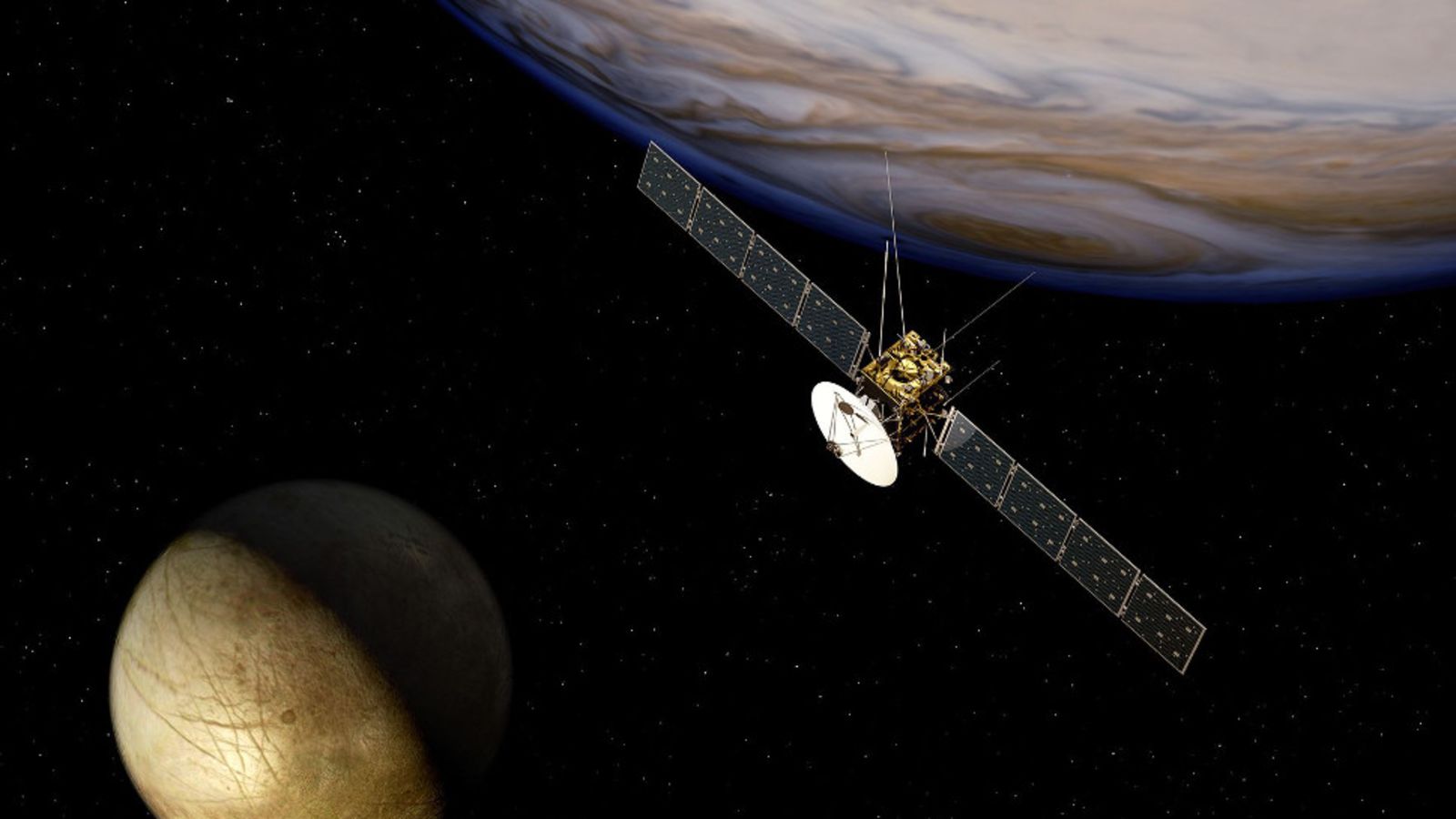The IAA, the only Spanish institution involved in JUICE (ESA), finishes the engineering phase of its contribution to the mission
JUICE, a mission of the European Space Agency (ESA) that will be launched in 2022, will study Jupiter and its moons to analyze the possibilities of the development of life around the gas giant planets. The Institute of Astrophysics of Andalusia (IAA-CSIC) participates in two of the instruments of the mission, the GALA laser altimeter and the JANUS camera
The Institute of Astrophysics of Andalusia (IAA-CSIC) is the only Spanish institution that will contribute technologically and scientifically to the JUICE mission (Jupiter ICy moons Explorer), of the European Space Agency, which will depart in 2022 for Jupiter to study its characteristics and those of its main satellites. The first phase of technological development culminates this week, with the delivery of engineering models designed for the mission.
"We are part of the international consortiums that build two of the mission instruments, the JANUS camera and the GALA altimeter, which will work in a complementary way to study the surface and the interior of the satellites. JANUS will also analyze the atmosphere of the planet and obtain complementary data with those of other instruments of the mission," says Luisa Lara, a researcher at the Institute of Astrophysics of Andalusia (IAA-CSIC) who participates in the mission.

THE GALILEAN SATELLITES REVOLUTION
Jupiter has more than sixty known satellites, including the four Galilean satellites, named after Galileo, its discoverer. They are Io, Europa, Ganymede and Callisto that, together with Jupiter's faint ring and a trio of small moons (Amaltea, Metis and Tebe), form a full-fledged mini solar system, with circular and flat orbits around the planet´s equatorial plane.
The discovery of these four large moons revolving around Jupiter marked the beginning of the Copernican revolution, which overthrew the belief that the Earth was the center of the universe. At present, the study of these moons can also be a revolution, since they have put in check the concept of habitability, previously only applicable to planets based on their capacity to hold liquid water: three of these moons, Europa, Ganymede and Callisto, show signs of harboring oceans under their surfaces.
Thus, the system composed of Jupiter and its moons has become a clear objective for the study of habitable environments. JUICE mission will study, over three years, the turbulent atmosphere and magnetosphere of the planet, as well as the surface of Europe, focused on the search for organic molecules, to finally focus on Ganymede, a satellite bigger than Mercury and the only one in the Solar System with its own magnetic field.
The high interest of this system is associated with a similar technological challenge. "The great technological challenge of the mission supposes high restrictions in two aspects: on the one hand, no instrument must electromagnetically contaminate the J-MAG instrument, which will measure the weak magnetic field of Ganymede, possibly originated by an ocean of liquid salty water under its surface. On the other hand, Jupiter's environment is highly harmful to the electronic components of the experiments and the solar panels of the satellite, which has forced us to design the instruments with electronic devices capable of surviving very high levels of radiation", points out Luisa Lara (IAA-CSIC).

SPANISH PARTICIPATION
The Institute of Astrophysics of Andalusia (IAA-CSIC) is part of the international consortiums that are building two of the instruments that are part of the JUICE geodesic instrumentation package: the high-resolution space JANUS visible camera (led by Italy) and the GALA laser altimeter (led by Germany).
The IAA has developed the power supply of both instruments, as well as the filter wheel, designed and manufactured entirely in the IAA, and the control electronics of the JANUS camera. "All the electrical and mechanical tests have been carried out successfully and the models are ready to be delivered to the German Space Agency in the case of GALA, and to the Leonardo company hired by the Italian Space Agency in the case of JANUS. But this is only the beginning ", concludes Lara (IAA-CSIC).
JUICE TEAM AT THE IAA:
J.M. Castro, M.L. Herranz, F. Alvarez, I. Bustamante, A.J. García-Segura, P.J. Gutiérrez, J. Jiménez, I. Martínez-Navajas, J. Rodrigo, R. Rodrigo y L. M. Lara.
INDUSTRIAL PARTICIPATION:
SENER Ingeniería y Construcción.
Instituto de Astrofísica de Andalucía (IAA-CSIC)
Unidad de Divulgación y Comunicación
Silbia López de Lacalle - sll[arroba]iaa.es - 958230532
http://www.iaa.es
http://www-divulgacion.iaa.es

